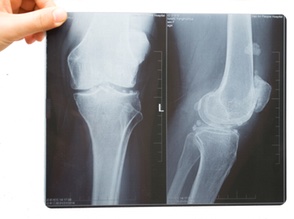There are over 9,000 different kinds of PFAS or perfluoroalkyl substances — endocrine-disrupting chemicals that never break down and stay in our environment and our bodies forever.
PFAS are used in everyday products from cosmetics, shampoos and dental floss to food packaging, cleaning products, water-resistant fabrics and nonstick cookware.
Previous studies have shown that PFAS can lead to serious health problems such as reproductive issues and a higher incidence of cancer.The connection is especially concerning because peak bone mineral density during adolescence is a good predictor of whether someone develops osteoporosis later in life.
The connection is especially concerning because peak bone mineral density during adolescence is a good predictor of whether someone develops osteoporosis later in life. Our bodies constantly absorb and replace bone tissue. But with osteoporosis, new bone creation doesn't keep up with the old bone removal. Many people, particularly men, don't know they have osteoporosis until they break a bone.
The researchers focused on two different groups of adolescents. In the first group, 304 Hispanic teenagers were followed for approximately a year and a half. The researchers found a connection between higher levels of one type of PFAS — PFOS — and a decrease in bone mineral density.
In the second group, in which nearly three in five out of 137 adolescents were Hispanic, high levels of PFOS were once more associated with lower bone mineral density.
The connection between PFAS and bone density has been previously studied among mostly older white males. “Many existing studies haven't included participants this young, but we're now able to see that this association is already happening at a time when bones are supposed to be developing,” the lead researcher of the study, Emily Beglarian, a doctoral student in the Department of Population and Public Health Sciences at USC's Keck School of Medicine, said in a press statement.
The Wirecutter blog offered these suggestions for reducing exposure to PFAS:Avoid textiles that advertise that they're waterproof or stainproof. That includes wall-to-wall carpeting, upholstered furniture, down jackets, hiking books or underwear.
- Avoid cooking tools that contain PFAS, particularly non-stick cookware. To lower exposure, opt for cast-iron, stainless steel and ceramic pots. Especially avoid using nonstick cookware that has been around for a decade or more because they are especially toxic.
- Try not to eat out of paper, cardboard and plant fiber packaging (that includes most compostable bowls and plates). Also avoid eating out of pizza boxes and microwave popcorn bags.
- Get a water filter especially if you live in an area where PFAS contamination is known or suspected. Look for one that's NSF certified to filter out high levels of two types of PFAS (PFOA and PFOS) from entering your body via the tap.
- Avoid textiles that advertise that they're waterproof or stainproof. That includes wall-to-wall carpeting, upholstered furniture, down jackets, hiking books or underwear.
In addition to reducing your exposure to these endocrine-disrupting chemicals by not purchasing these products, you'll also be sending a message to companies that PFAS-free products are important to consumers.





